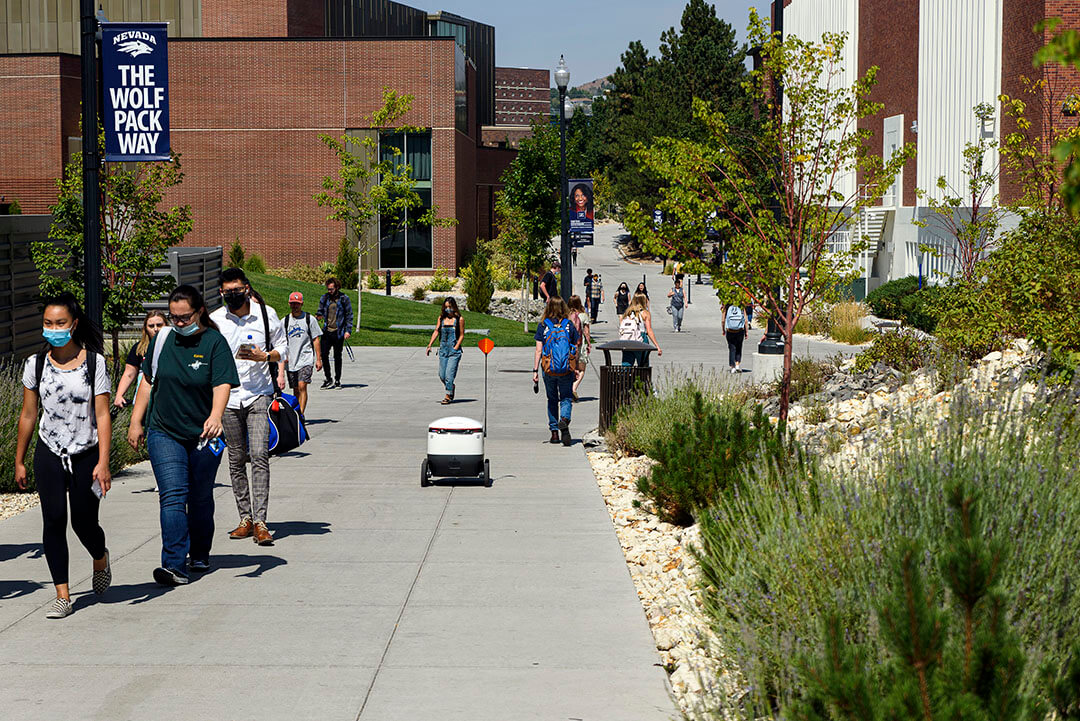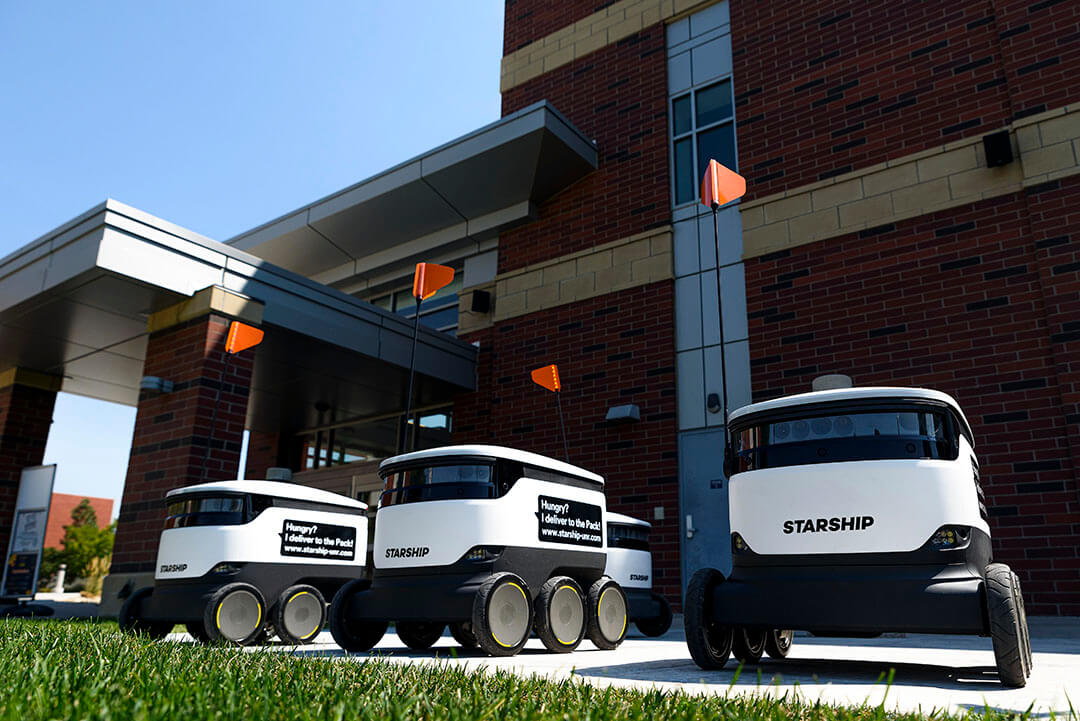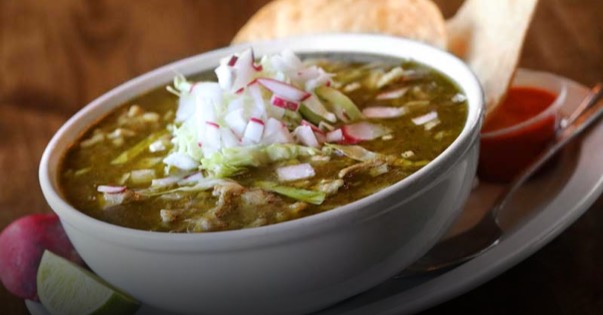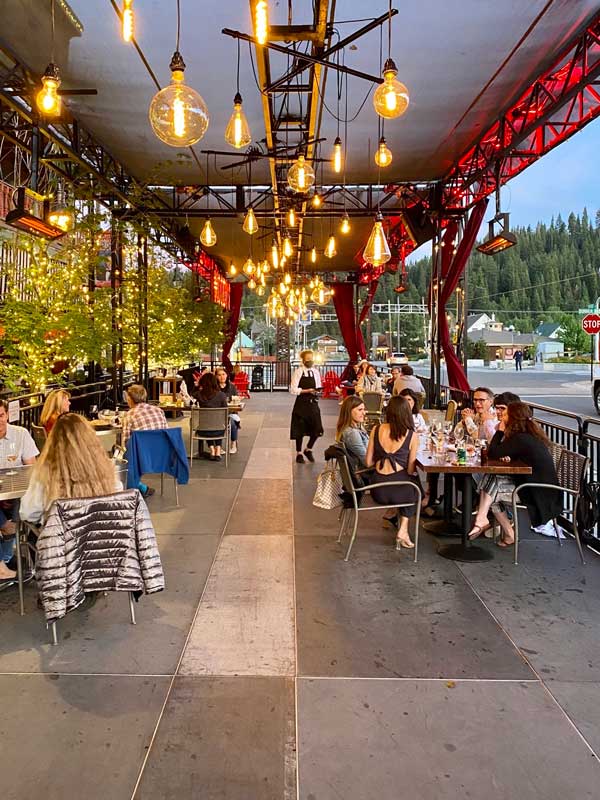University’s novel robotic food delivery system takes the cake.
Imagine, if you will, walking down an empty street one evening. Suddenly, you hear a voice requesting your assistance. You turn to see a sleek, rectangular box on wheels, asking you to please press the button at the crosswalk so it can cross the street.
No, it’s not The Twilight Zone. You’re actually on Virginia Street, on the perimeter of the University of Nevada, Reno campus. And this little robot, en route to a hungry student at a nearby dorm, is part of the university’s innovative food delivery system.
In late August, Chartwells, the university’s contracted dining service, partnered with Starship Technologies to bring an initial fleet of 20 robots to campus to deliver meals, snacks, and beverages to students, faculty, staff, and campus visitors.
“We’re excited to be one of the first campuses in the world to offer this robotic food service,” says Heidi Rich, marketing director for UNR’s dining services.
Student Benefits
Rich points out that this is a convenient, environment-friendly, affordable service for the campus community. As an added bonus, it provides a safe, hands-free delivery option during the pandemic and facilitates social distance by reducing crowds in dining venues on campus.
The service is accessed through a free app that can be downloaded to a mobile device. With that app, you can order from any participating Chartwells locations at UNR, arrange delivery to a campus location or adjacent residential hall, pay (including a modest delivery fee of about $2), track the robot’s journey, and unlock the robot’s lid to retrieve your order. The goal is to accomplish delivery in less than 30 minutes.

The presence of the robots also has created a “fun buzz around campus,” according to Rich. Students enjoy seeing them, and some have even created some affectionate nicknames for the devices, including WALL-E, R2-D2, and “the puppies.”
“I think it’s also a cool educational resource for the Starship team to come and speak in classes,” Rich adds. “Students are really interested in the robotic technology.”

And who wouldn’t be? These friendly looking robots are pretty amazing. They are 99 percent autonomous, using computer vision and GPS to pinpoint their locations to the nearest inch. They travel at 4 miles per hour and are designed to emulate pedestrians, using sidewalks and crosswalks. Loaded with 12 cameras, ultrasonic sensors, and radars, they can detect and circumvent any obstacles along the way.
Theft? No problem. They are equipped with sirens if picked up, as well as cameras to record and automatic tracking technology. And the food is safe, too. The locked lid only can be opened by the ordering customer.
What can’t they do? Climb stairs or enter buildings. And in case a smart-aleck student tries to arrange delivery into Manzanita Lake, the robots automatically reroute to use the nearest sidewalk.
Oh, yeah … also, they can’t push those buttons at the crosswalks, so please give them a hand.
Reno writer Barbara Twitchell had a blast writing this story. She wishes she could take one of those “puppies” home with her — just for the fun of it!


